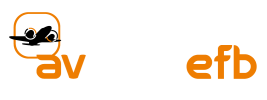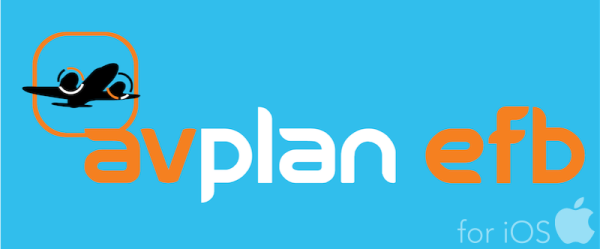This section describes how to create a description for a specific aircraft for flight planning purposes. Each specific aircraft (or “aircraft instance”) inherits the performance properties of its Type, but will otherwise be unique.
As previously described, the aircraft type has settings for every aircraft ever made of that type. Although two aircraft might be the same type and year (sharing the same performance data and weight limitations, etc), different features may have been installed over the years affecting the basic empty weight, avionics capability and so on. An aircraft instance contains all of those particular details for the particular individual aircraft.
To add an aircraft instance, tap Settings > Aircraft Type Database > [your type] > Add New Aircraft..
Enter as much detail as you can. At a bare minimum to use the aircraft for flight planning, you’ll need to add:
| Callsign | Do not leave blank. In Australia and NZ this is typically the last three letters of the registration. Please do NOT put the full registration here. Doing so may cause flight plan submission to fail. |
| Registration | The full registration but without a hyphen: VHABC, ZKXYZ, GABCD, N123456 etc |
| VFR Contingency fuel (fixed reserve) | The number of minutes of contingency (fixed reserve) fuel that you wish to plan for VFR flights |
Should you wish to submit flight plans using AvPlan EFB, a much more complete profile will need to be created. As well as the above details, add:
| Colour | The main colour or colours of the aircraft. Do not use commas or special characters such as & |
| Home Base | Optional. If used in the USA will become a default starting point in a flight plan; otherwise ignored |
| Hourly Rate | Optional. Used to calculate the cost of a flight |
| Wet/Dry? | Optional. Determines whether the hourly rate includes fuel costs |
| ICAO Transponder Address | Optional Unique Hexadecimal code assigned to the aircraft. Reserved for future use. |
| Reserves | A full set of contingency and final fuel (variable and fixed reserve) parameters for VFR/IFR flight. Used in the calculation of fuel requirements |
| Operation type | RPT, Charter, General Aviation or Military: select as appropriate |
| Avionics | Radios, navigation equipment, etc in the aircraft and available to the pilot (i.e, that the pilot is qualified to use) |
| Transponder | Mode C, Mode S, ADS-B in/out, FANS etc. Only one from each transponder type group should be selected. e.g. only one Mode S type, only one ADS-B, etc. |
| Company | For commercial flights; the name of the operator’s company. For private flights use “PRIVATE” |
| PBN Codes | Performance Based Navigation Capabilities (required for IFR only) |
| SELCAL | Optional. SELCAL two-tone code for suitably-equipped HF radio installations |
| Other Avionics | If ‘Z’ is nominated in Avionics, an extra row will appear in the ICAO FLIGHT PLANS section ‘Other Avionics NAV/’. If you need to nominate RNP2 for your flight plans, select Z, then put RNP2 in the Other Avionics row. |
All of the above are just defaults to save the time required to enter frequently used values. They can be overridden prior to plan submission (without changing the default values) in any flight plan that uses the aircraft.
| POB | The default number of POB |
| Taxi Fuel | A default quantity used for fuel calculations |
| Survival equipment | ICAO standard options for: Desert, Polar, Jungle or Maritime survival equipment, plus emergency radios, beacons, dinghies and lifejackets. First aid & water were specified in the previous version of NAIPS. These are now ignored, and will be removed in a future software update |
| Default Flight Status | For Emergency services and similar organisations it is possible to set special codes for Default Flight Status. (HOSP, MEDEVAC, RESCUE, ANGELFLIGHT and so on). If these do not apply, simply leave this part blank. |
| Default remarks (Field 18) | If you put a remark in here it will be used to populate the /RMK line in Field 18 of the flight plan submission. Handy, for example, for noting a Sat-phone number. if you routinely carry one. Leave this blank unless you actually need to use it. |
Version (Optional)
You may wish to create more than one version of your aircraft, or you may evolve it over time for some reason. This item allows you to give this current version a unique name e.g. “V2 (ADSB upgrade)”.
Weight and Balance
If you use the Weight and Balance capability of AvPlan (highly recommended!), then the Basic Empty Weight (BEW) and the Empty Arm of the aircraft must be specified.
(The Empty Lateral Arm is only relevant if the aircraft is a helicopter. It can be left blank for fixed wing aircraft).
Default values for weights in the various loading stations (i.e. seats and baggage compartments) and default fuel loads can be set up here if desired. If entered, they will be immediately applied to a plan when the aircraft is selected, but can be altered as required for the particular loading condition on that flight / stage. This will help reduce the effort required to input these items in each new flight plan.
If you have Multiple WnB profiles defined for the Type, each of them will be reflected in this section.
Need more help with this?
Help Centre (Tap and hold to open the Link)


